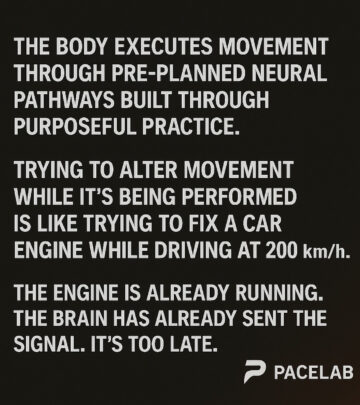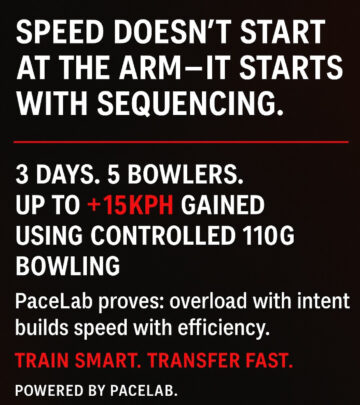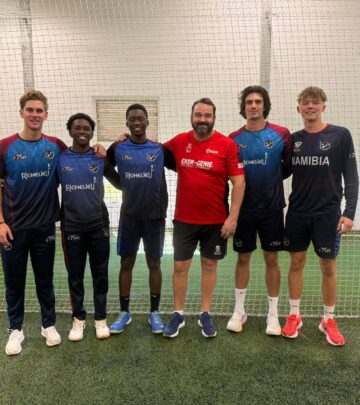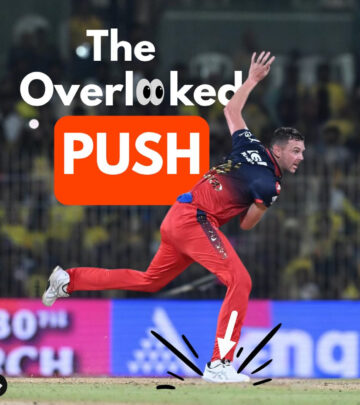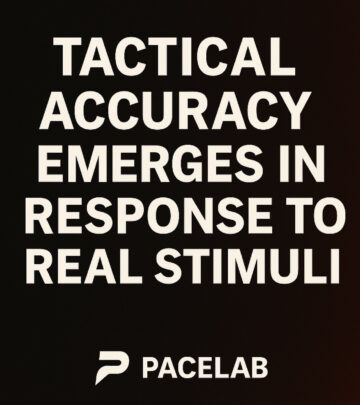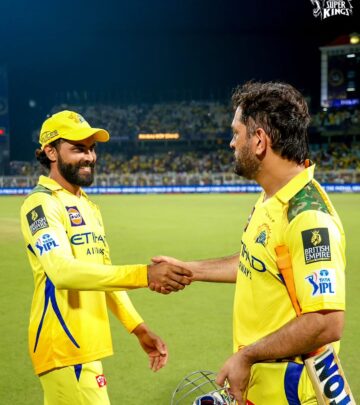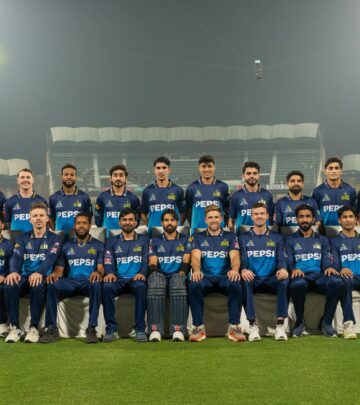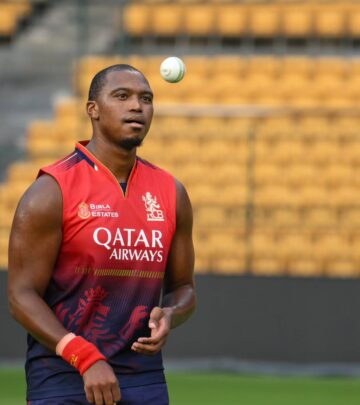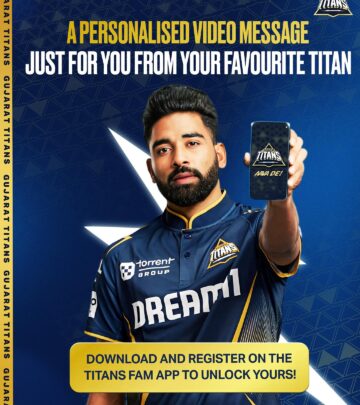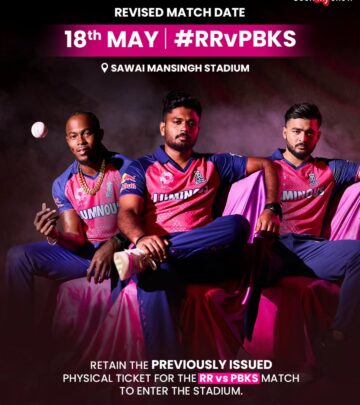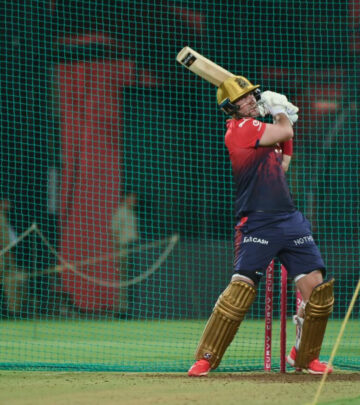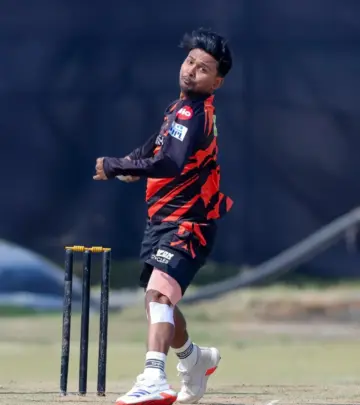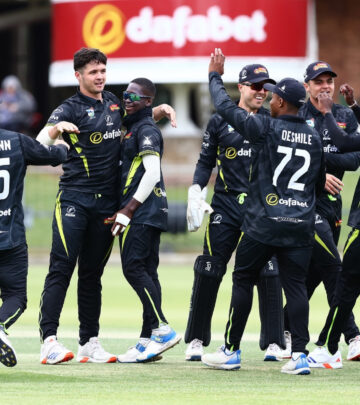Bowling at Cones Isn’t True Accuracy Training
PaceLab shows fixed cones fail to train true accuracy in fast-paced cricket matches truly
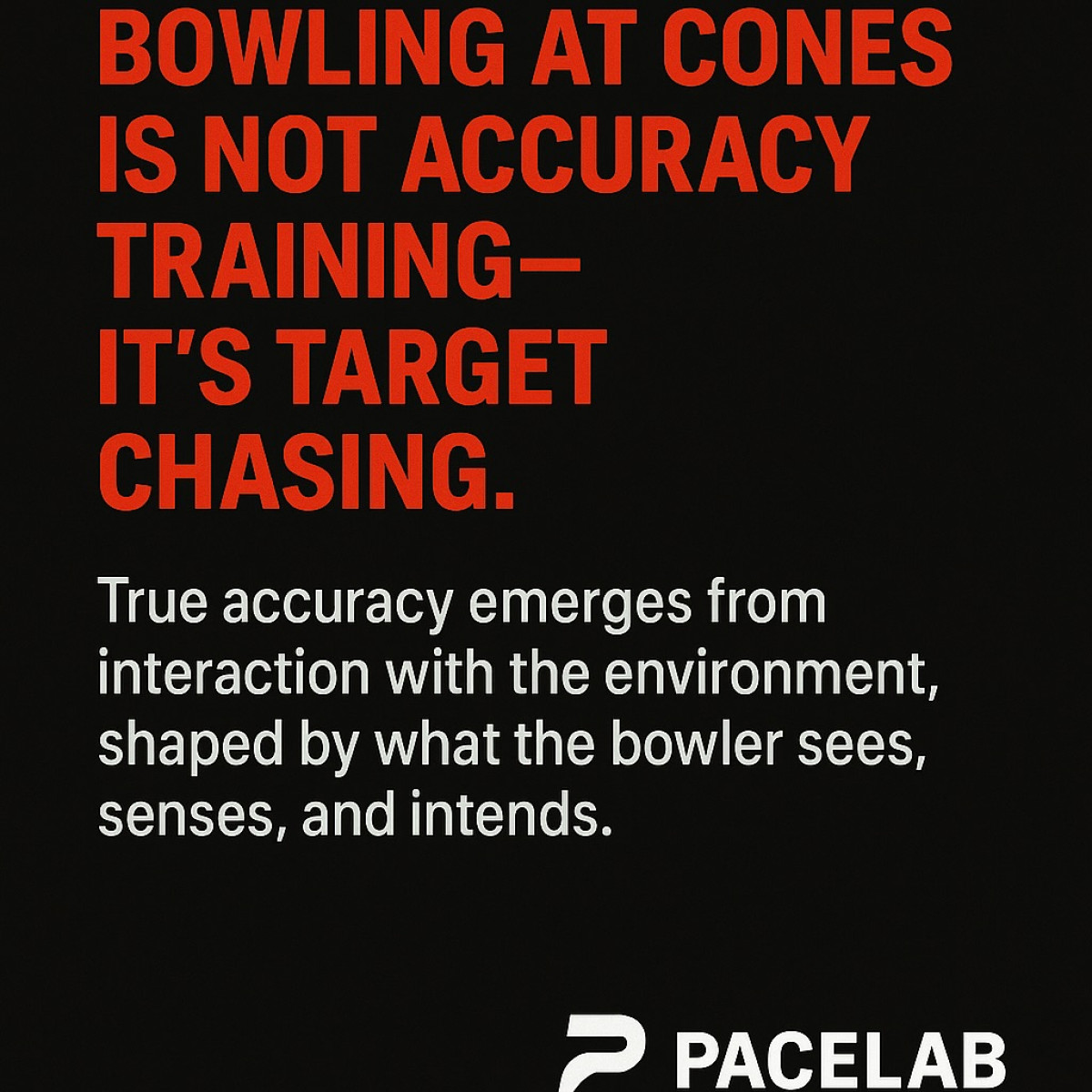
Image: Instagram
In a recent statement that is turning heads in modern fast bowling training circles, renowned coach Steffan Jones explained why traditional cone drills fall short in developing true accuracy. At the heart of his message is a simple fact: precision without perception is not accuracy. In an era where game-realistic training is increasingly vital, the PaceLab system is setting a new standard by embedding context, live feedback, and randomized stimuli into every session.
Understanding Constraint-fixed Precision Versus True Accuracy
Bowling at fixed cones is often mistaken for accuracy training, yet as Jones points out, it teaches only constraint-fixed precision. This means bowlers are drilled to hit a static target with no perceptual cues from a game scenario. According to the PaceLab methodology, true accuracy in fast bowling does not rest in a motor skill alone; it is a perception-action solution that relies on the bowler’s ability to read the game, react to movement, and adjust mechanics on the fly. When bowlers practice with cones, they lose the chance to work under the dynamic pressures of a live match, where a batter’s movement or a changing field setup can significantly affect performance.
The Importance Of Game-realistic Drills
Steffan Jones emphasizes that real accuracy is trained when bowlers experience varied conditions—where they see, sense, and react to live stimuli. Training under game pace, with intensities reaching at least 80% of full effort, is crucial. Anything less is neurologically a different task altogether. Cone drills, while they may appear technical, run the risk of teaching the motor system to solve a problem that is irrelevant to real match situations. Jones argues that without a batter to read or a field to consider, bowlers risk developing fragile skills that do not hold up under pressure.
Pacelab’s Revolutionary Approach
The PaceLab training system is built around the idea that accuracy comes from contextual precision under pressure. Instead of fixed cones, coaches use variable constraints: shadow batters, scenario-based targets, and randomized call-outs. This method not only trains bowlers’ motor skills but also sharpens their perceptual abilities while under fatigue. One of the key messages from Jones’s recent post is clear—”Precision without perception is not accuracy.” Rather than confining bowlers to rigid drills, PaceLab coaches what they call ‘chaos’, harnessing the unpredictable nature of cricket to build transferable skills.
Integrating Live Coaching And Variable Conditions
Instagram posts from PaceLab, including previous updates from Jones, reveal the power of live coaching. In a past post, Jones noted the outstanding results from a three-day camp in Namibia. Coaches there observed significant improvements in both speed and accuracy as bowlers learned to adjust their delivery to simulated match conditions. These images and captions underscore that when bowlers train in an environment that mimics real gameplay, their performance improvements are not only rapid but sustainable.
The current training paradigm at PaceLab is a departure from many traditional methods employed across cricket academies. Fixed target drills are being replaced with dynamic, reactive training sessions. In one popular Instagram update by Jones (@steffanjones105), he stated, “Don’t wait months for improvement. Live coaching in the PaceLab training system will produce better responses and results than a year of remote instruction.” This message resonates with many current fast bowlers who are increasingly seeking game-relevant practices instead of outdated drills.
Bridging The Gap Between Drills And Match Conditions
The core of the debate is more than just about hitting cones. It is about transferring skills from practice to the chaotic and fast-paced environment of competitive cricket. Jones’s argument goes that traditional drills, due to their predictable nature, force the motor system to learn a flawed solution. With no variation, bowlers are unprepared for the variability inherent in an actual game. The PaceLab approach calls for training that involves real-time decisions and adaptations. Variable constraints such as shadow batting and scenario-based targets compel bowlers to integrate perception with action while under pressure.
This progressive training philosophy is gaining traction. The message is simple: train for transfer. Train with context. By incorporating live feedback and game-like scenarios, coaches are helping bowlers develop skills that truly translate to improved performance on match day. It also addresses a frequently cited issue in the world of fast bowling—the inability to consistently deliver yorkers. Too many bowlers depend on fixed target drills, a method that inherently limits the development of the nuanced skills required for effective yorker execution.
Jones wraps up his insights by stating, “PaceLab doesn’t coach cones—we coach chaos.” This punchy line encapsulates the shift away from mechanical drills toward an approach that embraces the unpredictability of the sport. It also serves as a call to action for both coaches and bowlers to rethink traditional methods and adopt techniques that better prepare them for the dynamic challenges of competitive cricket.
Through this innovative lens, it is clear that the future of fast bowling accuracy lies not in repetitive cone drills but in adaptive, context-rich training environments. The emphasis is on developing skills that are robust under pressure and transferable to the real-life chaos of a cricket match. By integrating perception, decision-making, and high-intensity practice, bowlers can unlock levels of performance that fixed drills simply cannot provide.
Steffan Jones and the PaceLab system are at the forefront of this training revolution, offering a blueprint for how modern fast bowling can evolve. Their approach, built on the principles of transfer and contextual precision, is ensuring that the skills honed in practice are the very ones that create winners on the field.
Read full bio of Joyce



